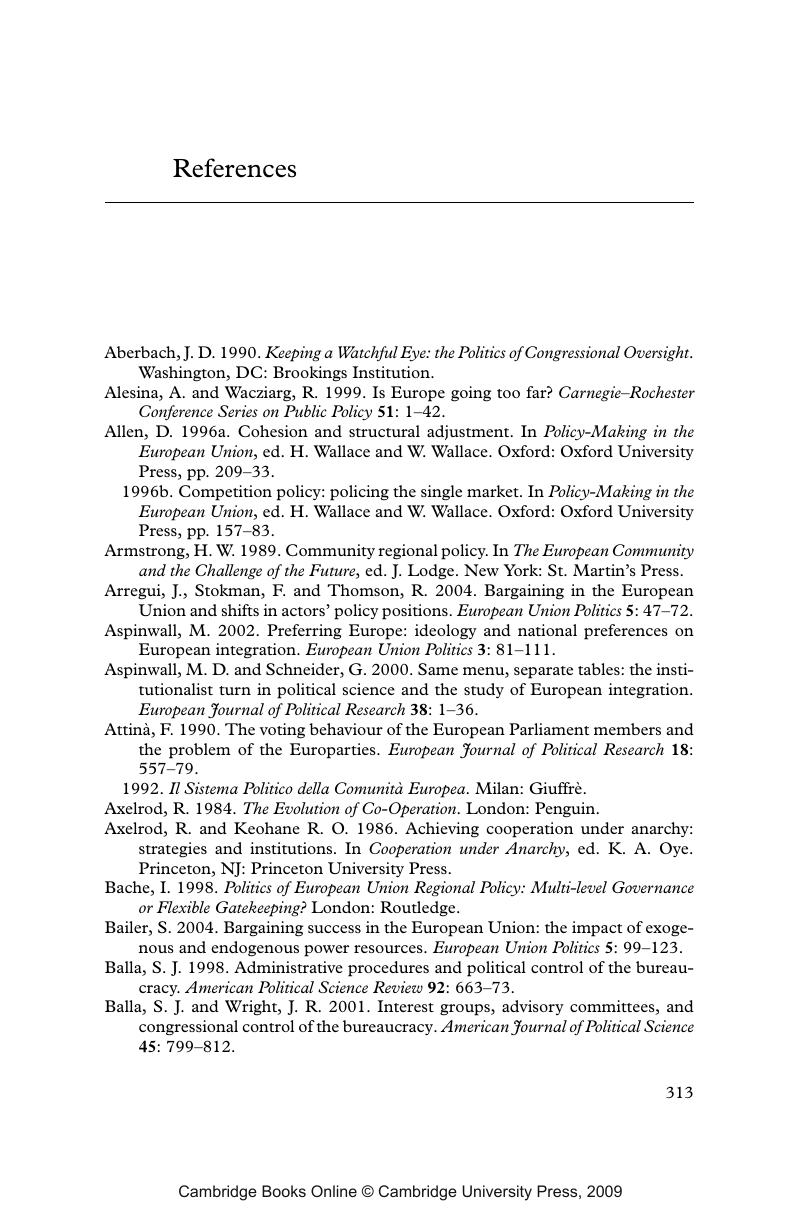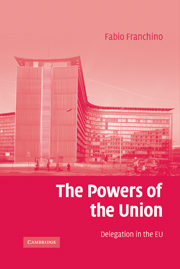Book contents
- Frontmatter
- Contents
- List of figures
- List of tables
- Preface
- 1 Introduction
- 2 A formal model of delegation in the European Union
- 3 Data and longitudinal analysis
- 4 Decision rules, preferences and policy complexity
- 5 Delegation in the European Union: quantitative analysis
- 6 Delegation in the European Union: case studies
- 7 The delegation preferences of the European Parliament
- 8 Conclusion
- References
- Index
- References
References
Published online by Cambridge University Press: 27 October 2009
- Frontmatter
- Contents
- List of figures
- List of tables
- Preface
- 1 Introduction
- 2 A formal model of delegation in the European Union
- 3 Data and longitudinal analysis
- 4 Decision rules, preferences and policy complexity
- 5 Delegation in the European Union: quantitative analysis
- 6 Delegation in the European Union: case studies
- 7 The delegation preferences of the European Parliament
- 8 Conclusion
- References
- Index
- References
Summary

- Type
- Chapter
- Information
- The Powers of the UnionDelegation in the EU, pp. 313 - 338Publisher: Cambridge University PressPrint publication year: 2007

